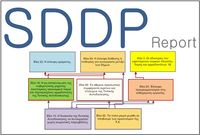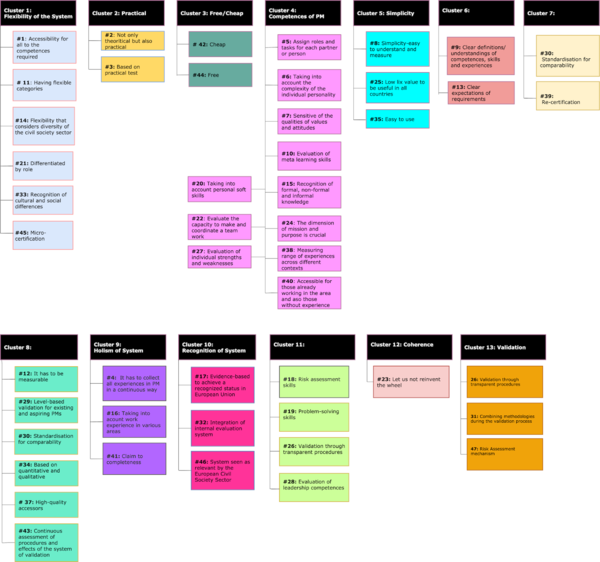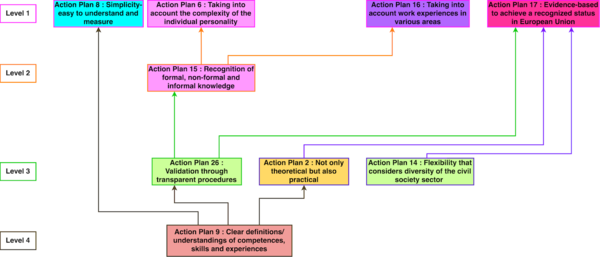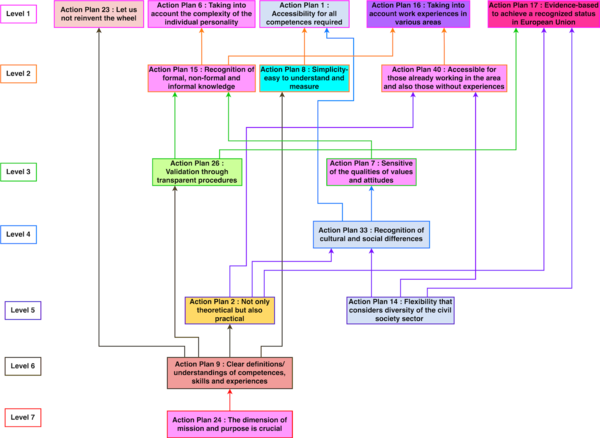AER-V SDDP of the International Facilitators Training School 2022: Difference between revisions
No edit summary |
No edit summary |
||
| Line 43: | Line 43: | ||
<br> | <br> | ||
[[File:AER- | [[File:AER-V_MAP1.png|thumb|center|upright=2.0|alt=First MAP]] | ||
<br> | <br> | ||
| Line 65: | Line 65: | ||
<br> | <br> | ||
[[File:AER- | [[File:AER-V_MAP2.png|thumb|center|upright=2.0|alt=Second MAP]] | ||
<br> | <br> | ||
| Line 77: | Line 77: | ||
The workshop was facilitated by [[Yiannis Laouris]], [[ | The workshop was facilitated by [[Yiannis Laouris]], [[Clara NG]], [[Agnieszka Dadak]], [[Rafał Dadak]], Assistant Facilitator, [[Jerzy Kraus]]. Assistant Facilitator, [[Camille Lechoux]], Organisational Support | ||
| Line 84: | Line 87: | ||
==External Links== | ==External Links== | ||
* [http://www. | * [http://www. Website] | ||
[[Category:Future Worlds Center Projects]] | [[Category:Future Worlds Center Projects]] | ||
Revision as of 03:04, 9 September 2022
|
Executive Summary
This report has been developed in the context of the CARDIAC project (FP7 - Coordinating Action: Grant Agreement 248582). The goal of the project is to create a platform that can bring together the various stakeholders in the area of accessible and assistive ICT with a view to identifying Research & Development gaps and emerging trends and generating a research agenda roadmap.
The Triggering Question (TQ) was
What mechanisms would ensure successful technology transfer in accessible and assistive ICT products and services?
In response to the TQ, the 21 participants came up with 55 mechanisms, which were categorized in 10 clusters. Following the voting process, 37 ideas received one or more votes and were structured to create the influence MAP shown below.
The following ideas received the most votes:
- 8: (9 Votes) Simplicity-easy to understand and measure
- 9: (9 Votes) Clear definitions/understandings of competences, skills and experiences
- 14: (9 Votes) Flexibility that considers diversity of the civil society sector
- 15: (8 Votes) Recognition of formal, non-formal and informal knowledge
- 16: (8 Votes) Taking into account work experience in various areas
- 6: (6 Votes) Taking into account the complexity of the individual personality
- 17: (6 Votes) Evidence-based to achieve a recognised status in European Union
- 2: (5 Votes) Not only theoretical but also practical
- 26: (4 Votes) Validation through transparent procedures
Level 1 = [8, 6, 16, 17]
Level 2 = [15]
Level 3 = [26, 2, 14]
Level 4 = [9]
The structuring process was continued in a smaller group, at the on-line, follow-up co-laboratory workshop that took place the 8th of July 2022. The analysis of influence was made adding also the ideas that received 3 and 2 votes. As the effect, the factors on the map were structured on 7 levels:
Level 1 = [16, 6, 17, 1, 23]
Level 2 = [8, 15, 40]
Level 3 = [26, 7]
Level 4 = [33]
Level 5 = [14, 2]
Level 6 = [9]
Level 7 = [24]
According to this map the most influential idea that according to the collective wisdom of the participants needs to be addressed with priority is:
Idea 24: The dimension of mission and purpose is crucial Clarification: The wanted validation system is not for project management in general, but more specific for project management in a civil society (3rd sector), where the value-driven approach is essential both for the NGOs and their volunteers contrary to the project management in the market area (2nd sector) where the economic rationality of profit is essential; and the public area (1st sector), where the bureaucratic rationality is essential. Even though many of the needed technical skills may be the same in the three sectors, the leadership competences in the third sector may need a more clear focus on the purpose and meaning of the activities, and the strategic competences may be aware of the importance of the content-related mission and purpose as the main driver to engage and motivate the volunteers who are active not as employees but as active citizens.
The participants had time to discuss and reflect on the influence map and in general agreed that the arrows in the map made sense to them. In sum, the participants reported their satisfaction that their voices have been heard and documented and communicated their expectations for follow-up activities to address the diagnosis of their needs.
The workshop was facilitated by Yiannis Laouris, Clara NG, Agnieszka Dadak, Rafał Dadak, Assistant Facilitator, Jerzy Kraus. Assistant Facilitator, Camille Lechoux, Organisational Support



